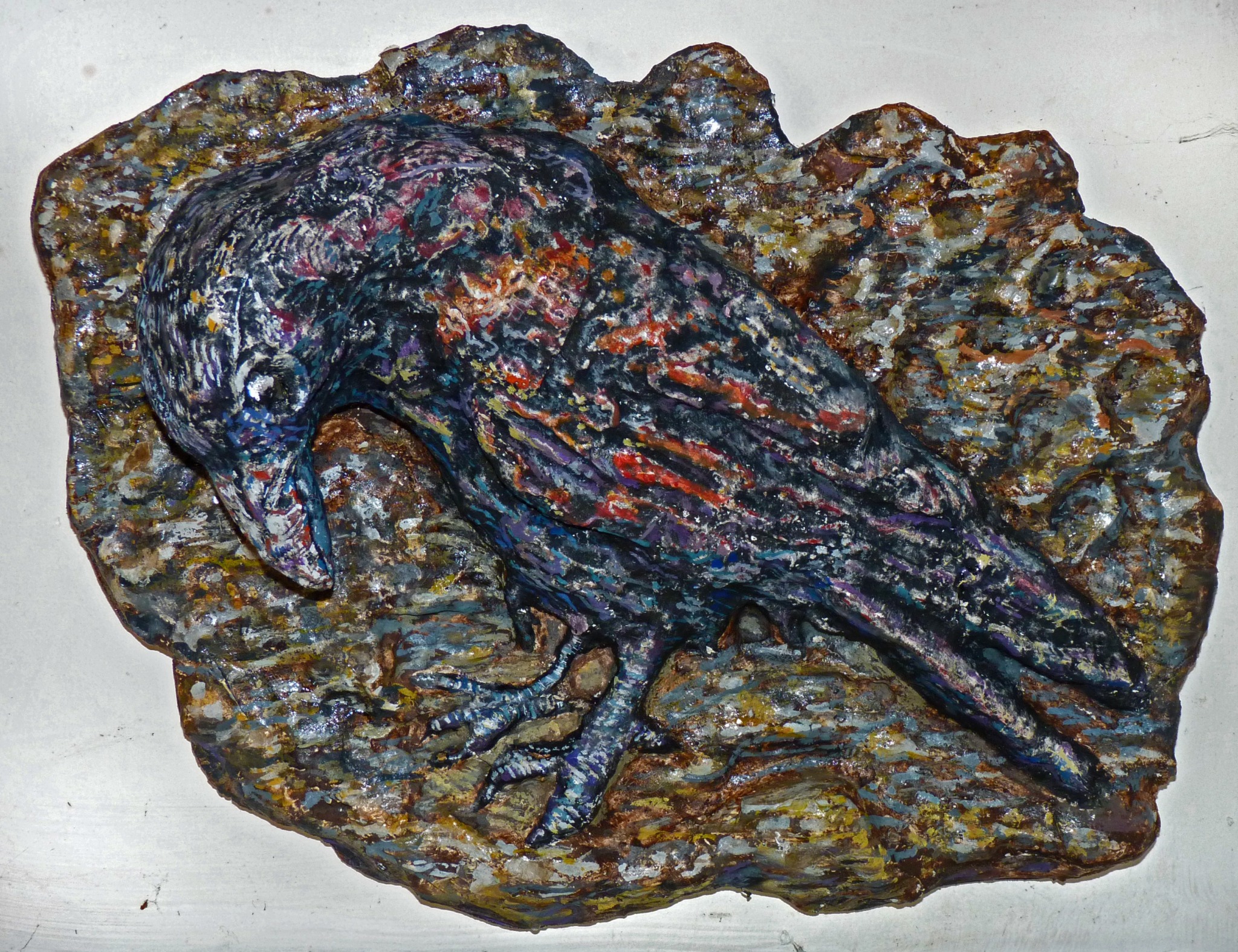We caught up with the brilliant and insightful Richard Metz a few weeks ago and have shared our conversation below.
Richard, thanks for taking the time to share your stories with us today What’s been the most meaningful project you’ve worked on?
The ephemeral outdoor painted tree installations have been very meaningful to me. They arose from my ideas of being in nature, working with nature, making images and telling stories that worked best seen outside in nature. I created a sustainable art practice, using non toxic natural pigments and eggs to create images that fade away in a few years. They would not hurt the trees in any way, but would be surprising and delightful to passers by, both human and non human. Projects over the past 13 years have included myths and native creatures that were created in art residencies across the U.S.
A recent project titled “Ravenswood” was important in that it was the largest project involving 40 trees, and was a deliberate story, an ecological fairy tale. It begins with the dark and scary woods, with monstrous beings, then evolves slowly into lighter colors as the tree paintings explore and learn nature. The center of the project is bright suns, word sounds to be sung, chakras, and the recognition of our animal selves. The project fades to night, as one is not longer afraid of the darkness, but finds wonder in the stars and constellations. The project ends with two trees that convey that the light inside us is the same as the energy of the galaxies. The only darker side of this project was that while I was paid well for it, the time frame the art center gave me was too short. I had to have a single minded focus that threw my life out of balance and I became unavailable and unpleasant. I won’t make that mistake again.


Richard, love having you share your insights with us. Before we ask you more questions, maybe you can take a moment to introduce yourself to our readers who might have missed our earlier conversations?
My practice is a tension between making work which I love, working within ideological concerns that I am responsive too, and balancing the rest of living. I have been supported by my wife Cecilia Dougherty on my journey.
My work in the past 20 years has focused on the land, on developing a closer relationship to it, through art. I feel like my artistic practice is the other side of my political involvement in local projects to preserve woodlands and remove toxins from the environment. One side can’t exist without the other. I think it is crucial to be involved within our communities, working with people and organizations to heal our damaged landscapes. If not us, then who?
Being out in nature of hours at a time working, is not only the most pleasant of experiences, it creates a closeness with the lands near where I live in Southeastern Pennsylvania. I even use the soils of these places in my paints at times. Painting has always been an important part of my life, as has politics. The focus on both outdoor installations in nature, and painting landscapes are ways that follow my goals of creating a closeness with the nature non-human world.
In the past five years, I’ve taken to the study of crows and ravens, and having them instead of humans, be the moving actors in my works. De-centering humans in my work is a way of stating that we are part and dependent on a vast complex ecosystem, not apart from it.


Is there a particular goal or mission driving your creative journey?
One of the goals of my work is to encourage the viewer to spend time in nature, and to work to protect the woods and meadows near them from pollution, development, and degradation. The natural world is under such threat, that not only are creatures going extinct everyday, but the very fabric of life that humans depend on is disappearing into a morass of plastic waste, technological distraction, inequality, and an rapidly warming apocalyptic future.


Are there any books, videos or other content that you feel have meaningfully impacted your thinking?
There are many books and artists that have powerfully influenced me. Some are:
Braiding Sweetgrass by Robin Wall Kimmerer is an incredible look at the connection between Native American wisdom and science by a Native American Botanist. It helped me see that a closer reciprocal relationship could exist with the natural world.
The writings of Edward Abbey and Aldo Leopold, naturalists and environmental protectors are inspiringly beautiful and courageous, and have validated my outrage and need to contribute to protecting the wilderness.
David Abrams books: The spell of the Sensuous and Becoming Animal, approach and see nature from a heightened awareness that I strive to attain.
David Foster Wallace is the writer who inspired me to really jump into fiction writing 15 years ago. I’ve created many short stories, radio dramas, and a recently published book of poems and paintings called -A Murder of Crows.
I’ve seen my own perceptions reflected in the fiction of Peter Handke, which encouraged me to value my thoughts and feelings.
Much new scientific research into the actual thinking intelligence of nature, of trees and woodlands, in such magazines as Orion, have been important to my thoughts and goals.
Contact Info:
- Website: https://www.mistermetz.com
- Instagram: thembones2
- Facebook: Richard Metz














Image Credits
Richard metz-All photos were taken by me-


